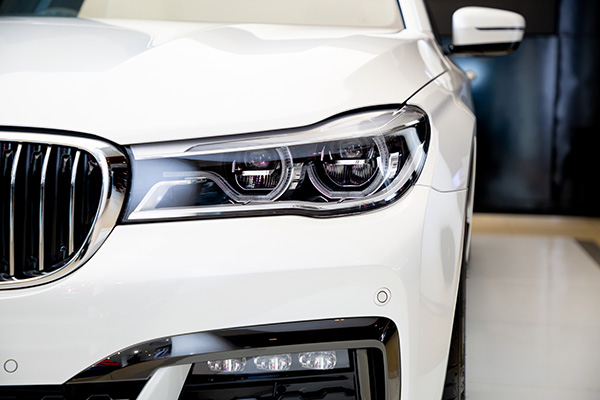
BMW’s history stretches back to the early 20th century, but its automotive legacy began in earnest in 1928 with the purchase of Fahrzeugfabrik Eisenach. The first car to carry the BMW name was the 3/15, based on the British Austin Seven. Though modest, it marked the brand’s entry into passenger vehicles and laid the groundwork for what would become a global icon in engineering and performance.
Before that, BMW focused on aircraft engines, a background that would influence its precision engineering for decades to come.
Post-War Rebuilding and the 1950s Comeback
Like many European manufacturers, BMW faced major challenges following World War II. Its factories were damaged, and production was heavily restricted. In the late 1940s, the company produced motorcycles to stay afloat.
In 1952, BMW returned to building cars with the 501 luxury sedan. It was elegant and well-built but expensive, and sales were limited. The introduction of the Isetta microcar in 1955 brought a much-needed boost. With its compact shape and fuel efficiency, the Isetta helped BMW recover financially and build a loyal customer base.
The New Class Revolution in the 1960s
The 1960s marked a major turning point for BMW with the launch of the Neue Klasse, or "New Class" sedans. These vehicles introduced modern styling, excellent handling, and more powerful engines. The 2002 release of 1968 became a standout success. It was compact, sporty, and practical, winning praise from drivers and automotive journalists around the world.
The New Class models also laid the foundation for BMW’s signature front-engine, rear-wheel-drive layout that continues to define the brand today.
The Rise of the 3 Series, 5 Series, and 7 Series
BMW solidified its identity in the 1970s with the debut of several long-standing model lines. The first 5 Series arrived in 1972, followed by the 3 Series in 1975, and the luxury 7 Series in 1977. These vehicles expanded BMW’s appeal and gave customers a range of options depending on their preferences for size, performance, and comfort.
The M division was also born during this time, bringing motorsport technology to road cars. The M1 supercar, introduced in 1978, was a bold entry that previewed what BMW’s high-performance future would look like.
Embracing Technology and Growth in the 1980s and 1990s
By the 1980s, BMW had established a reputation for crafting cars that strike a balance between sportiness and luxury. The second-generation 3 Series became a hit, especially in the U.S., where it gained a loyal following. Meanwhile, the 6 Series and 8 Series added style and power to BMW’s lineup.
The company also began expanding its production and research facilities globally, helping it keep up with growing demand. During the 1990s, BMW invested heavily in safety, electronics, and engine development. This era also brought about advancements in diesel technology and the introduction of new body styles like the touring wagon and convertible.
BMW’s Global Expansion in the 2000s
BMW’s influence went far beyond Germany as it opened plants in the U.S., China, and other countries. The launch of the X5 SUV in 1999 and subsequent X Series vehicles marked a successful shift toward the growing demand for utility vehicles without compromising performance.
The 2000s also brought in more driver-assist technology, infotainment systems, and design changes that sparked mixed reactions. Despite this, BMW continued to lead in innovation, pushing forward with turbocharged engines and experimenting with hybrid models.
Modern BMW and the Push for Electrification
Today, BMW blends its classic driving characteristics with modern demands for efficiency and technology. The i Series, including models like the i3 and i8, showcased the brand’s commitment to electric and plug-in hybrid vehicles. New models like the i4 and iX offer fully electric driving without sacrificing the signature BMW experience.
The company is also incorporating lightweight materials, digital displays, and advanced driver assistance systems. BMW continues to offer high-performance M variants and luxury models, while expanding into sustainable mobility.
Proudly Servicing BMW Owners at RM Automotive in Northridge, CA
BMW drivers expect precision, and that’s exactly what RM Automotive delivers. If you own a BMW, you already know how much engineering goes into every detail. At RM Automotive in Northridge, CA, our technicians are trained to maintain and repair your vehicle using the same attention to detail.
Whether you drive a classic 3 Series or a modern i4, we’ll make sure it stays in peak condition. Schedule your service today and experience the care your BMW deserves.